
The best Apple and Windows laptops that are worth your money

CNN —
Buying a new laptop is both an exciting and potentially frustrating experience. Exciting, of course, because a powerful computer that allows you to communicate and work efficiently — and keep yourself entertained — is invaluable.
You may find yourself understandably frustrated, however, as you browse through dozens of different models, configurations, designs and brands. It’s our job to keep up on the latest trends in tech, and we’d be lying if we said we never felt overwhelmed by all of the options ourselves.
But it is our job, and we take it seriously. So for the last few months, we’ve been testing the latest and greatest laptops we could get our hands on, from Apple to Dell, and we’ve found some standout machines:
When it came to declaring our top picks, we split things by ecosystem: Apple and Windows. Make no mistake, though, with either of these you’re getting a dependable laptop that can scale for intense tasks when needed and power through everyday workloads.
Best Apple laptop

At $999, the MacBook Air with M1 is a budget laptop that can take on any task — from web browsing to productivity to 4K video editing. And if you’re in the Apple ecosystem, it will work perfectly with other Apple devices.
Best Windows laptop
The Dell XPS 13 packs a gorgeous, lightweight, slim and highly portable design for working anywhere, a nearly borderless display that makes content pop and a powerful 11th Gen Intel processor that can burn through most workloads with ease.
The upgrade pick
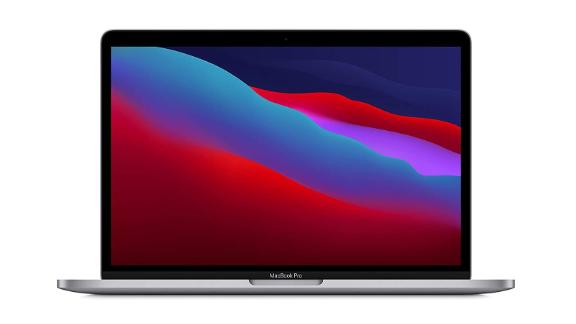
For $1,299, the 13-inch MacBook Pro adds a graphics core and a cooling system that lets it take on more intense tasks It’s a true portable powerhouse with a battery that can last for days.

Key specs
- Display: 13.3-inch Retina display at 2560 x 1600 (tested)
- Processor: Apple M1 with 7-core (tested) or 8-core GPU
- RAM: 8GB (tested) / 16GB
- Storage: 256GB (tested) / 512GB / 1TB / 2TB
- Size and weight: 11.97 x 8.36 x 0.16 – 0.63 inches, 2.8 pounds
Our top pick for an Apple laptop isn’t that surprising: the entry-level, M1-powered MacBook Air ($999). It keeps the same exact build of the previous Air, including the Magic Keyboard that’s truly a treat to type on. But this new model removes the fan and swaps out the Intel chip for the M1, the first Apple Silicon processor.
Apple’s M1 chip sets a new standard with blazing performance, and it’s so energy efficient that it stays cool enough that the new Air doesn’t need a cooling fan. That’s something we haven’t encountered on a Mac before. In our benchmarking, the M1 Air beats the previous Air and the Intel-powered 13-inch MacBook Pro, and ties the 16-inch MacBook Pro. That’s $2,399 performance for $999.
But what about in everyday use? Well, it’s great for productivity and personal tasks like writing, emailing, messaging, browsing the web, streaming and even creative tasks. We were easily able to export 1080p HD and 4K videos at full resolution with no slowdowns. It can handle multiple instances of the same app — several windows in Safari or Chrome with multiple tabs open — and you can leave Photoshop open in the background.
Apple’s macOS is also optimized for the M1 chip, as are several major apps. Apple’s entire suite of applications is optimized, and Chrome already has a new version. But fear not, for most Intel apps will run just fine, thanks to an emulator called Rosetta 2, which is installed automatically when you open a non-optimized app. Just open the app and dive right in — the initial launch might take a little extra time as Rosetta 2 works, but it will run normally afterward. You’ll also find that the standard 8GB of RAM is plenty — even for those creative tasks.
The new MacBook Air has the same battery inside as the previous Intel version, but the M1 uses a lot less energy while pushing out more power. This means the Air stays cool in operation (it doesn’t even have a fan) and delivers ridiculous battery life, clocking more than 12 hours. In everyday use, you’d be hard-pressed to kill the battery. That makes it perfect for remote work around the house, and gives students enough bandwidth to make it through a day of classes and then hit the library to crank out an essay afterwards.
The 13-inch Retina display comes in with a resolution of 2560 x 1600 and 227 pixels per inch, it supports the P3 wide color gamut, and 400 nits of brightness were enough for us to see the display clearly wherever we used it. Apple’s True Tone adjusts the color temperature to suit the space you’re in.
The controls are all great. The M1 Air, like last year’s Intel Air, uses the improved Magic Keyboard that replaced the problematic butterfly keyboard that marred some recent Apple laptops. The keyboard is punchy, with a typewriter-like recoil, and was very comfortable to type on, with plenty of travel (aka the depth needed for a proper keypress). The large trackpad is smooth to the touch, with clear haptic feedback for right, left and double clicks.
It’s difficult to find a better overall machine than the M1 Air. Performance is so much improved that it makes the budget Air competitive with Apple’s power-user oriented MacBook Pro range. Yes, it’s good for productivity and personal needs, but it can meet the demands of creative and power users as well. It’s our choice for the best Apple laptop.
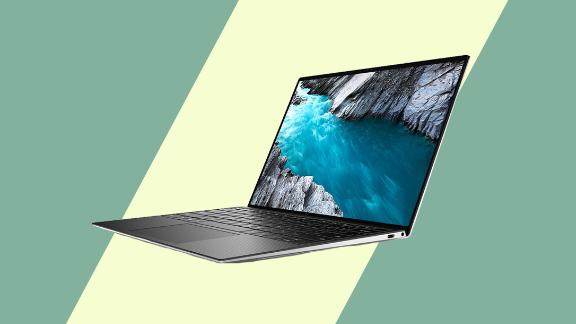
Key specs
- Display: 13.4-inch display at 1920 x 1200 (tested) / 3.5K OLED / 4K
- Processor: 11th Gen Intel Core i3 / Core i5 / Core i7 (tested)
- RAM: 8GB (tested) / 16GB / 32GB
- Storage: 256GB / 512GB (tested) / 1TB solid state drive
- Size and weight: 11.6 x 7.8 x 0.6 inches, 2.64 pounds
The Dell XPS 13 has long been a near-perfect Windows laptop, and the latest model makes it even better with the most immersive and stunning PC display we’ve seen yet. It sports a four-sided InfinityEdge display, meaning there’s virtually no bezel to get in the way of any movies, shows or work documents you have open on its gorgeous 13.4-inch panel.
Dell’s laptop comes with a crisp full HD (1920 x 1200) screen to start, though you can configure it with a 4K (3840 x 2400) display if you’re willing to pay up. Our full HD model looked beautiful in everyday use, with thick, inky blacks that made it easy to sift through work documents and plenty of color and detail when we stared at Henry Cavill’s chiseled face and shiny gray hair while streaming The Witcher.
And with optional touch functionality, the XPS 13 is as versatile as mainstream laptops get. The XPS 13’s touch display proved fast and responsible in our testing, whether we pinched to zoom into web pages or bounced between tabs and applications with the tap of a finger. You should check out the Dell XPS 13 2-in-1 if you want a true convertible tablet experience, but the standard XPS 13’s touch screen still gets the job done for basic tasks.
The Dell XPS 13’s eye-popping display is packed into an equally sleek design that weighs just under 3 pounds and is a mere 0.5 inches slim. If portability is a priority, this laptop should be at the top of your list. Dell’s notebook comes in silver and black by default, but we recommend springing the extra $50 for the gorgeous Arctic White variation. It looks stunning.
And despite its svelte size, the XPS 13 is a beast under the hood. Powered by Intel’s latest 11th-generation Tiger Lake processors, the newest XPS 13 can tear through everyday tasks. We frequently pushed Dell’s laptop during everyday multitasking and never noticed any slowdown, even as we bounced between dozens of browser tabs and apps such as Discord, Spotify and Slack running all at once. The XPS 13 also blazed past many top Windows laptops on our benchmark tests.
The XPS 13’s keyboard feels fantastic, offering plenty of travel complete with a comfortable soft-touch coating on both the keys and wrist rest. We spent hours hammering away at work documents and never felt any discomfort, thanks to the keys’ smooth and bouncy feedback.
Dell’s stunningly slim design does come at the expense of an equally slim port selection, as you get just two USB-C ports, a microSD card slot and a headphone jack. The inclusion of a microSD port gives it a slight edge over the MacBook Air, and Dell deserves credit for including a USB-C to USB-A adapter for your older accessories. But if you’re a power user who uses a variety of peripherals and monitors at once, you’ll probably need to spring for a dongle or USB-C dock.
The Dell XPS 13 starts at $999, which gets you an 11th-gen Intel Core i3 processor, 8GB of RAM, 256GB of solid-state drive (SSD) storage and a 13.4-inch, 1920 x 1200 non-touch display. We reviewed a slightly higher-end $1,322 model, which packs a faster Core i7 processor, a bigger 512GB SSD and a touch screen. We’d recommend opting for the $1,099 configuration or higher, as you’ll get a dependable Core i5 processor.
No matter how you configure it, however, the XPS 13’s beautifully svelte design, zippy performance and stunningly immersive screen make it the best Windows laptop you can buy.
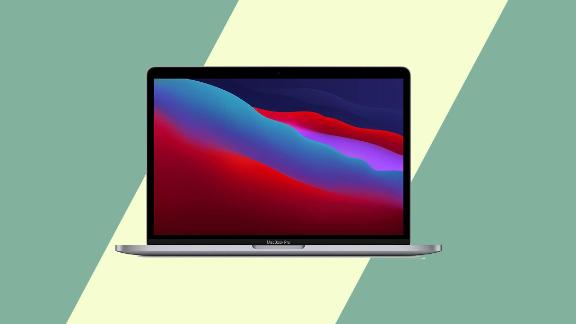
Key specs
- Display: 13.3-inch Retina display at 2560 x 1600 (tested)
- Processor: Apple M1 with 8-core GPU (tested)
- RAM: 8GB (tested) / 16GB
- Storage: 256GB (tested) / 512GB / 1TB / 2TB
- Size and weight: 11.97 x 8.36 x 0.61 inches, 3 pounds
The 13-inch MacBook Pro — with an M1 chip with an extra graphics processing unit (GPU) core over the one used in the MacBook Air, as well as a fan that lets that processor work harder when needed — has a little more muscle, enough that it’s replacing the 16-inch MacBook Pro as our upgrade pick for an Apple laptop.
The upgrades mean the new MacBook Pro has a longer runway for intense tasks and repetitive workflows over the MacBook Air. The MacBook Pro rendered full video files seconds — or with 8K footage, minutes faster than the Air. Those saved minutes can make a difference when on a deadline for a project or working out in the field.
The new laptop is a bit quieter than the previous Intel-based 13-inch MacBook Pro . We did manage to activate the fan when rendering multiple 4K and 8K video clips. We expect pro-level applications to run more efficiently and make less use of the fan for these intense workflows as they get optimization updates for Apple Silicon. Adobe’s Lightroom is already optimized for Apple Silicon and Photoshop will be updated with support in 2021.But in the meantime, we had no issue running Intel-optimized creative apps on the MacBook Pro thanks to Rosetta.
Inside the 13-inch MacBook Pro is a 58.2-watt-hour battery, and larger than that of the MacBook Air. We’re still running our battery test on the 13-inch MacBook Pro, but we expect it to hit close to 18 hours with a typical workload and 19 hours and 20 minutes just playing back video. That beats the 16-inch MacBook Pro, which lasted for just shy of 10 hours and 30 minutes. Rapid exports of HD, 4K and 8K video dropped the battery only by a few percent. That’s seriously impressive, and Chrome (now optimized for Silicon) doesn’t cause the battery to tank either. The 13-inch MacBook Pro is otherwise unchanged from the previous model. It shares the comfortable Magic Keyboard and large trackpad with the Air, while the MacBook Pro adds Apple’s Touch Bar in place of the physical row of function keys on the MacBook Air. This allows applications to customize the experience; we found it useful for scrolling through a timeline while editing video, but not many apps have yet adopted the functionality in a useful way, so it’s really a matter of personal taste whether it’s a worthwhile upgrade. Touch ID is just as fast as on the Intel machines for authentication and easy unlocking.
The Pro’s 13.3-inch Retina display with True Tone can hit up to 500 nits of brightness, noticeably brighter than the Air, especially when working in brightly lit rooms or outdoors. Like the Air, it delivers a 2560 x 1600 resolution at 227 pixels per inch with support for P3 Wide Color.
As a whole, the 13-inch MacBook Pro impresses and sets a high standard for a Pro machine powered by Apple Silicon. Luckily the prices are staying the same as earlier models, the 13-inch, starting at just $1,299. To sum up our experience, it has a battery and performance that outperforms the MacBook Air and even the 16-inch with most tasks. The 13-inch Pro stands strong as a do-anything laptop. Over the MacBook Air, it has a longer runway that can sustain more intense tasks for longer periods of time.
While in terms of sheer processing power the 13-inch Pro is competitive with the 16-inch MacBook Pro (which this year is still based on an older Intel chip) Pro creatives may want to consider the larger laptop with its larger display and better support for peripherals. But for everyday video editing tasks, whether it’s your sole machine for TikTok or YouTube production or you’re looking for a remote workstation to supplement your desktop powerhouse, the 13-inch MacBook Pro makes a lot of sense.
While there are a number of factors to consider when choosing the right laptop, we advise that you start by figuring out how much display you need. Most laptops are available in display resolutions ranging from 1080p to 4K (3840 x 2160), and in screen sizes from 13 to 17 inches. Many Windows machines also offer optional touch displays.
We think a 13 to 15 inch laptop at 1080p (“Full HD” resolution) is the sweet spot for most people, as you’ll get very good clarity and a decent amount of real estate within a machine that’s still fairly portable and reasonably priced. This class of machine (known as an “ultrabook”) makes relatively few compromises and works well for most users.
Recommended specs
- Display: 13” to 15” at 1920 x 1080
- Processor: 11th Gen Intel Core i5 or i7 or AMD Ryzen 5 5000
- RAM: 8GB or more
- Storage: 512GB or larger solid state drive
- Ports: At least two USB-C connections
A higher screen resolution means you can see more detail when using apps and watching movies, or get more screen real estate for apps (assuming you are willing to look at very small text), but it can also drive the price of a laptop up considerably. So a 4K display (or alternative display technology options like OLED, also available in very high screen resolutions) makes the most sense if you do a lot of graphics work or use your laptop as your main entertainment screen for movies and TV, (though you’ll get the most benefit if you choose a 15” or larger display). Also think about how you’ll be using your laptop — a slim 13-inch notebook is ideal for working on the road, while a 17-inch machine isn’t quite as portable, but will get you more screen space (and possibly more power) for working at your desk.
Many Windows-based machines also offer optional touch displays, but we generally feel that you can skip this to save some cash. Unless you’re looking to carry only one device and are specifically looking for a 2-in-1 laptop that doubles as a tablet, we think a dedicated tablet does a better job at touch, and touch doesn’t add that much functionality to a laptop.
Many modern laptops are slim on connectivity options, usually packing a handful of USB-C ports in addition to a microSD card reader and a headphone jack. If you want a laptop that can connect to USB-A gadgets (and chances are you have a lot of those) as well as traditional HDMI cables for external displays, you’ll want to check out some of the thicker, business-class Windows notebooks out there from manufacturers like Acer and Lenovo. Alternatively, you can pick up a USB-C hub to augment your Mac or Windows laptop’s connectivity options.
Windows laptops come with a swath of processor options, but we consider the latest 11th Gen Intel Core i5 or the AMD Ryzen 5 5000 series to offer a good amount of performance for everyday multitasking for the price. And to back that processing power up, we recommend opting for at least 8GB of RAM to keep all of your apps running smoothly. If you’re someone who does heavy creative work such as video and photo editing, it’s worth considering Core i7/Ryzen 7 as well as 16GB to 32GB of RAM. And if you’re a gamer, you’ll need a laptop with discrete graphics, starting with at least an Nvidia GTX 1660 Ti or AMD RX 5600 XT.
There are less specs to worry about on a Mac, as Apple’s most recent laptops — even the entry-level Air — include the company’s powerful Apple M1 processors. There are a few Intel-powered Macs still available, but we recommend going with M1 for the best possible performance unless you are a graphics or video professional who needs extra connectivity or use external graphics processors or multiple high-resolution monitors, which the Apple Silicon chips don’t yet support.
Of course, you’ll also have to decide between Windows and Mac, which largely comes down to personal preference. Windows can be found on the largest range of laptops, including budget notebooks and powerful 2-in-1 workstations, and offers a better selection of gaming software. Meanwhile, macOS is limited to a handful of Apple’s own laptops, and is ideal for folks who already own lots of Apple products thanks to its ability to sync up with your iPhone, iPad and Apple Watch. Windows laptops can be found for as cheap as a few hundred dollars, whereas MacBooks occupy a premium middle ground that starts at $999 for the MacBook Air or $1,299 for the Pro.
After combing through new models, tabulating on the right configurations and circling back on our previous favorites, we settled on a pool of 10 laptops. Once we had all the models on hand, we began the unboxing process and charging them up to 100%. (Many laptops come with some power out of the box, but very rarely do they ship topped up.)
As with every CNN Underscored review, we rigorously test devices both quantitatively and qualitatively. For laptops, we made the decision to benchmark first to get a standard for quantitative performance. If you’ve read our standalone laptop, tablet or mobile phone reviews, these tests will be familiar.
On Windows laptops, we performed GeekBench 5 and PCMark 10 tests. These run the laptops through a series of workflows and application processes, many of which you’d find yourselves (and we found ourselves) completing on a daily basis. For Mac laptops, PCMark 10 is not available, so GeekBench 5 was performed.
Regardless of operating system, we put each laptop through our standard battery test, which involves charging the laptop to 100%, setting brightness to 50% and engaging airplane mode to ensure connectivity is off. We then loop a 4K video file with the sound set to 15% until the battery dies and the machine turns off. These tests are monitored in person as well as via two cameras to ensure accuracy.
The combination of battery and benchmark testing gives us a quantitative feel for the devices and a hard number for each that can be used for comparisons. We then used each laptop as our daily driver for work, play and entertainment tasks, testing the battery to see if it could last through a full day of tasks, watching a movie to get a feel for the display and, of course, running a bunch of different applications.
Our testing categories were as follows:
Design
- Build quality: We looked at what the laptop was physically made of and how it felt in our hands, on a desk and in our laps.
- Portability: Thickness and weight of each laptop was top of mind here, along with the overall size and bezels. We also tested if it could fit in a range of bags.
- Looks: We took note of the overall design, if it was sleek or stealthy.
Battery life
- Total battery life: The CNN Underscored battery test, explained above, was used to determine a quantitative battery life number.
- Stress test: We noted whether intense photo or video editing reduced battery life and how the laptop performed when playing a game.
Hardware
- Benchmarking: Using GeekBench 5 and PCMark 10, explained above, we established a baseline for performance.
- Processors and GPU: We observed how the internal hardware performed and if most models across similar price points had the same specs. Can these handle a full productivity load? Can we get the laptop to bottleneck?
- RAM: We considered how much RAM or memory comes standard and if it’s enough for core tasks.
- Storage: We noted whether the laptop opts for a solid-state drive (SSD) or a traditional hard drive (HD).
- Ports: We looked at how many ports the laptop features, any legacy options available and if a dongle comes in the box.
Speakers
- Overall: We observed how the speakers performed in core use cases, including movies, music and system sounds.
- Compression: We made note if the laptop speakers added any extra compression to core sounds or tracks.
- Bass: Did the laptop generate bass, or was it mostly missing?
Display
- Overall: We tested the display with various test images, applications (including word processing for pixelation), videos, VoIP, photo editing, gaming and even video editing.
- We additionally took a closer look at vibrancy, bezels, clarity and resolution.
Keyboard
- Overall: To get a feel for a keyboard, you really need to type a ton — and that’s exactly what we did.
- We paid close attention to specific categories, like tactileness and punchiness of the keys.
Software
- Experience out of the box: What apps come preloaded that provide real user benefits? Is there a ton of bloatware?
- Ease of use: How easy was it to navigate around the respective base software and any core apps?
Usability
- Overall: We noted what it was like to use as a daily driver and how it performed with a plethora of apps and workflows.
Warranty
- Overall: We noted the length of the included warranty and what it covers.

Amazon
Apple MacBook Pro 13-inch
Apple MacBook Pro 13-Inch (starting at $1,299; amazon.com)
Apple’s 13-inch MacBook Pro is a fine machine, no doubt. It’s well designed, has Touch ID, integrates with Apple’s ecosystem and has a display that makes other laptops jealous. But for us, the use of an eighth-generation Intel processor (compared with 10th-generation processors in all other models we tested) combined with its price tag kept this from being crowned the best overall laptop. Performance-wise, you’re unlikely to notice the difference between the two processors, but over time, the older hardware will show signs of slowing down sooner. If you want something more powerful than the MacBook Air and have the room in your budget, the 13-inch MacBook Pro is a worthy choice.

Amazon
Acer Aspire 5
Acer Aspire 5 ($709.57; amazon.com)
Acer’s Aspire 5 surprised us with its performance, especially when you factor in its low price. Overall, however, the build quality, display and battery life held it back. Out of all the laptops we tested, the Aspire 5 had the worst battery life, clocking in at five hours and 30 minutes in our benchmarking. The plastic housing helps with the overall weight but at the cost of feeling cheap. About performance: The Aspire 5 kept up with the Dell XPS models we tested, and even some of the MacBooks, so we have confidence that this model will be able to get the job done. Just keep your charger handy.
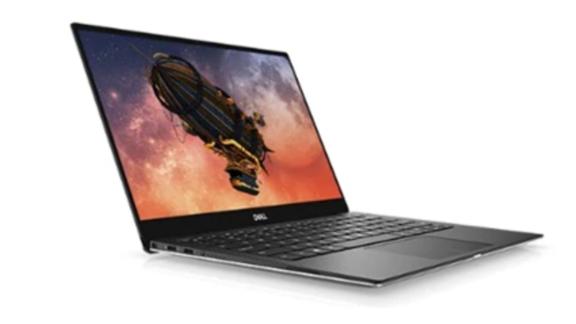
Dell
Dell XPS 13
Dell XPS 13 (starting at $783.99; dell.com)
Dell’s XPS line has remained competitive and impressive over the years, and while the XPS 13 had a strong showing in our testing, it fell short of any top honors. Performance-wise, the XPS 13 9300 was able to keep up with whatever routine task we threw at it. But the sheer amount of preloaded shortcuts, applications and even antivirus software was enough to give us pause. Bloatware needs to be a thing of the past, especially when it comes to constant passive-aggressive prompts and reminders about our antivirus trial expiring soon. In addition to bloatware, the keyboard on the XPS 13 felt, to be blunt, cheap. Despite its drawbacks, the Dell continues to use stunning displays in its XPS line.
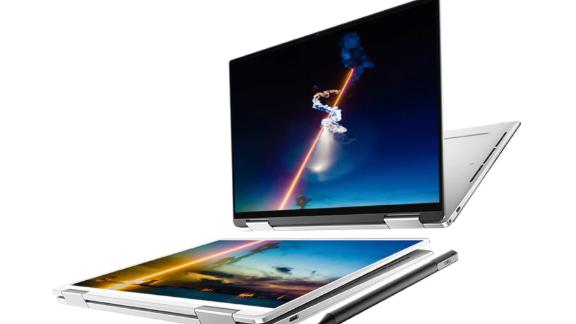
Dell
Dell XPS 13 2-in-1
Dell XPS 13 2-in-1 (starting at $881.99; dell.com)
We have a lot of the same complaints and compliments for the XPS 13 2-in-1 as we do for the standard 2-in-1. Performance, again, was respectable and something we’d have no problem working on daily. The touch screen and display quality makes up for some of that, especially when you fold the screen all the way back and use it more as a tablet than a laptop. But at the end of the day, the combination of bloatware and a keyboard that just isn’t an enjoyable experience kept it off the podium.
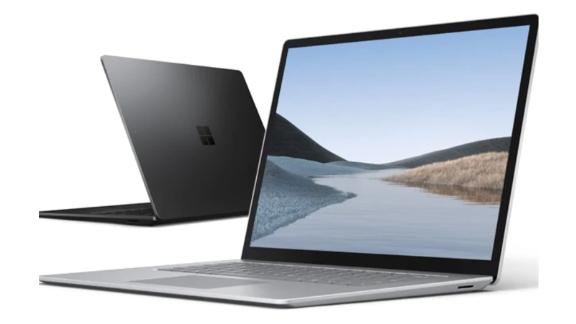
Microsoft
Microsoft Surface Laptop 3 15
Microsoft Surface Laptop 3 15 (starting at $999.99; microsoft.com)
As we noted, we really liked the smaller of the two Surface Laptop 3 models, but the 15-inch model fell flat when it came to performance in our testing. Specifically, we tested the AMD edition, and both regular performance and battery life fell short of expectations — Microsoft’s and ours. For example, we saw a lowly five hours and 36 minutes of battery life in our battery benchmark. That’s not nearly enough to get through a couple of movies, let alone an entire workday. The overall design and appeal is there with the larger Laptop 3, but we just wanted more from it.
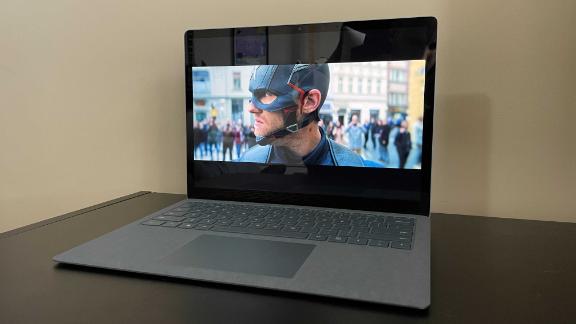
Mike Andronico/CNN
Microsoft Surface Laptop 4 (starting at $999.99; microsoft.com)
The Surface Laptop 4 is one of the best-looking laptops we’ve tested yet, and it’s a delight to use. The notebook has the same slim design we loved on the Surface Laptop 3, except now it comes in a stunning new Ice Blue version that really pops in person. You’re also getting the same unique 3:2 display (which is taller than competitors for easier multitasking) and a truly excellent keyboard.
Despite its great looks and fast overall performance on the 11th-gen Intel Core i7 model we tested, the Surface Laptop 4’s roughly 8.5-hour battery life lags behind many competing notebooks. For comparison, Lenovo’s ThinkPad X1 Carbon lasts over 10 hours. The Laptop 4’s webcam and speakers are also weaker than we’d like, and it’s fairly slim on ports (though you do get a USB-A connection — a rarity in many modern laptops). For those wanting a Windows laptop, take a look at Dell’s XPS 13 or the ThinkPad X1 Carbon from Lenovo.

Samsung
Samsung Galaxy Book S
Samsung Galaxy Book S (starting at $949.99; samsung.com)
Samsung’s Galaxy Book S looks absolutely stunning. It’s compact and lightweight, and it packs enough battery life to go well into the night after a full day of classes. However, it uses the same type of processor your phone uses, which means apps need to be built specifically for the platform. Because of that, whether or not an app works, or if it works well, is going to be a learning experience of its own. The technology behind the Galaxy Book S is undoubtedly the future, but it’s not quite ready for most.
Read more from CNN Underscored’s hands-on testing:
Source: http://rss.cnn.com/~r/rss/cnn_topstories/~3/oX57GJMoXDI/index.html

















